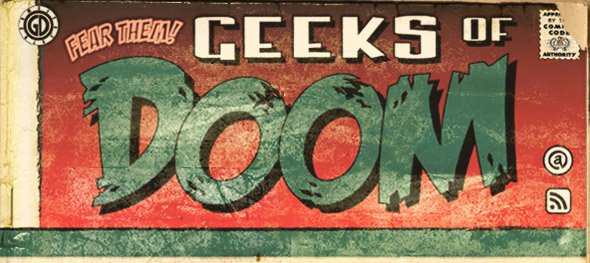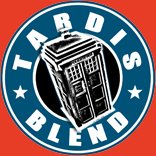
We were invited recently to see a presentation of Disney’s upcoming film The Jungle Book, at the El Capitan Theater in Los Angeles, California. The venue was the perfect spot for director Jon Favreau and Visual Effects Supervisor Rob Legato to talk about the upcoming live-action film, the technical aspects, how their live-action Jungle Book will compare to 1967 animated original, and the research and casting process that went into the new film.
Since the first bits of footage debuted during the D23 Expo back in August 2015, anticipation for The Jungle Book has been growing. We’ve already seen two trailers that hopefully brought out the inner child in you and the exciting joy that the newer generation will get to see when watching the film in its entirety. The combination of music, nostalgia, and high-quality visual effects have made this one of the most anticipated films of 2016.
But we didn’t sit down for the presentation just to see a bunch of clips on a standard medium. Instead, we were treated to seeing the film in laser projection, which presented its visual effects in a very high quality, almost as if the footage we were seeing was actually real.
Of course much of that is credited to the hard-working people over at WETA and MPC, the two visual effects houses that Favreau mainly worked with. So much of what we saw was truly amazing, in fact. We’ve been sitting on this piece for quite some time (details has been embargoed until today), so it is a real pleasure to finally be able to share what I saw with you. Below is our coverage of the presentation and two newly released images.
One of Favreau’s objectives for the film was to put a live-action sensibility into a computer world. In order to do that, he worked with some of the best visual effects houses in the world. But as we have seen in the past, a filmmaker could work with a number of effects houses. For The Jungle Book, though, Favreau and Legato only worked with two effects houses, WETA and Moving Picture Company (MPC). The former is better known for their work on The Hobbit and Lord of the Rings trilogies as well as the last two Planet of the Apes films. The latter’s recent projects include Ridley Scott’s The Martian, Kenneth Branagh’s re-envisioning of Cinderella, and James Gunn’s Guardians of the Galaxy.
To blur the lines of what is practical and what is computer-generated, two different sets were used: One that was used for film, the other that was being built for the next shot. This means that sets were constantly being built when it wasn’t being used or has served its purpose.

Two of the biggest issues were: How to get the kid in and how to get the animals to talk. To make this film as real as possible, Favreau and Legato never asked the effects artists to make the animals behave in a way they never would. So you won’t see animals that speak while moving their mouths like humans. Instead, they did research into the behaviors and mouth movements of real animals, and would then layer that on top of the motion-capture work.
Another aspect they had to get right was to capture realism is the surrounding environment. Part of the research process required paying attention to nature, seeing how lighting has an effect on animal fur – much like how Zootopia‘s animators looked at how lighting has an effect on fur – how shadows extend and shrink, the reflections cast on water, as well as how ripples are seen in the water. Example: when the animals gather around the watering hole to drink, you can see small ripples being created as each animal laps the watering hole to drink. Using ray tracing and digital film allows for better control of the brightness and no grain, which film stock cannot give us. This would make the film not pop out at you if you were to watch it in 3D, but rather it would put you inside of the film, which is one of Favreau’s goals. Of course, since the film is partially based on some aspects of the original film, some of the environments are exaggerated. Like purple flowers in the original animated film offer a brighter look to the live-action story that Favreau is telling.
Favreau credits the research and development teams putting the time and effort to bring in 110 percent. Our presentation took place at the El Capitan. The reason that I mention that is because the El Capitan is one of the few theaters in the country that is able to mix Dolby Vision technology Dolby Atmos together for a more immersive experience. Now that may sound like we are advertising, but it really isn’t. During the presentation, Favreau talked about how the use of the laser projection allowed them to bring out the film’s colors and images to bring the audience into the movie rather than make them feel like they are spectators. This means that the flowers are brighter and more detailed. The water flows as if it were real and not animated. The environmental aspects and the animal details that you see almost resemble the photorealistic work that was done in The Good Dinosaur. However, Favreau won’t be blending animated against a photo-realistic backdrop. Instead, he will be using a real-life human as the antagonist, while the animals will be life-like CGI.
Playing Mowgli, the protagonist of The Jungle Book, is the young newcomer from Manhattan, Neel Sethi. Favreau says that around 2,000 actors auditioned for the role. The principal story really hasn’t changed all that much from the original animated feature. An infant Mowgli gets separated from his parents and is then raised by wolves. While there is peace amongst the young human cub and the rest of the animal kingdom, the powerful Shere Khan (voice of Idris Elba) threatens his life since man isn’t allowed in the jungle. Forced out of his home, Mowgli, his father-figure, the black panther Bagheera (voice of Ben Kingsley), and new friend Baloo the bear (voice Bill Murray) set off on a journey of self-discovery while evading Shere Khan.

Favreau says that The Jungle Book incorporates lore from the animated film. But to make sure that the live-action film was separate from its animated counterpart, it won’t be a musical. However, you’ll be able to see hints and nods to the animated film through the characters’ mannerisms and the use of the Sherman Brothers’ music and songs like “The Bare Necessities.” Favreau wants to honor the memory of those who grew up with the original and make it appealing to a new generation. So there will be music that won’t betray the Disney classic or disrupt the tone.
While Walt Disney used an orangutan for King Louie in the animated film, Favreau’s version tries to stay true to the animal’s habitats and native environments. This means that King Louie (voice of Christopher Walken) won’t be an orangutan in the new movie. But Favreau did manage to find a loophole that would allow him to bring the likeness of King Louie to life while still staying true to the animal’s habitat. Instead of using an orangutan, the film will be using a descendant of the orangutan to represent King Louie called the Gigantopithecus (now extinct), which were native to the area.
It is an exciting time for moviegoers who enjoy watching a film in all kinds of formats. Favreau respects Christopher Nolan, J.J. Abrams, and Quentin Tarantino for keeping film stock alive. Seeing Star Wars: The Force Awakens in 35mm and The Hateful Eight on 70mm is a tribute to keeping that medium alive, and as long as they are alive we will be able to see more films in that format. But the visual expectations required The Jungle Book to be shot on digital. This doesn’t mean that Favreau half-assed it. As previously mentioned, Favreau used the two of the best visual effects houses in the world to create what you will see. Favreau credits his son’s curiosity after he watched Alfonso Cuarón’s Gravity. The high-quality visual effects seen in that film inspired Favreau to push the limits on digital film. Favreau hopes that other filmmakers will follow suit, and that they too will also push the limits on films shot digitally.
Disney’s The Jungle Book opens in theaters on April 15, 2016.
Images










No Comments »
No comments yet.
RSS feed for comments on this post. TrackBack URL
Leave a comment